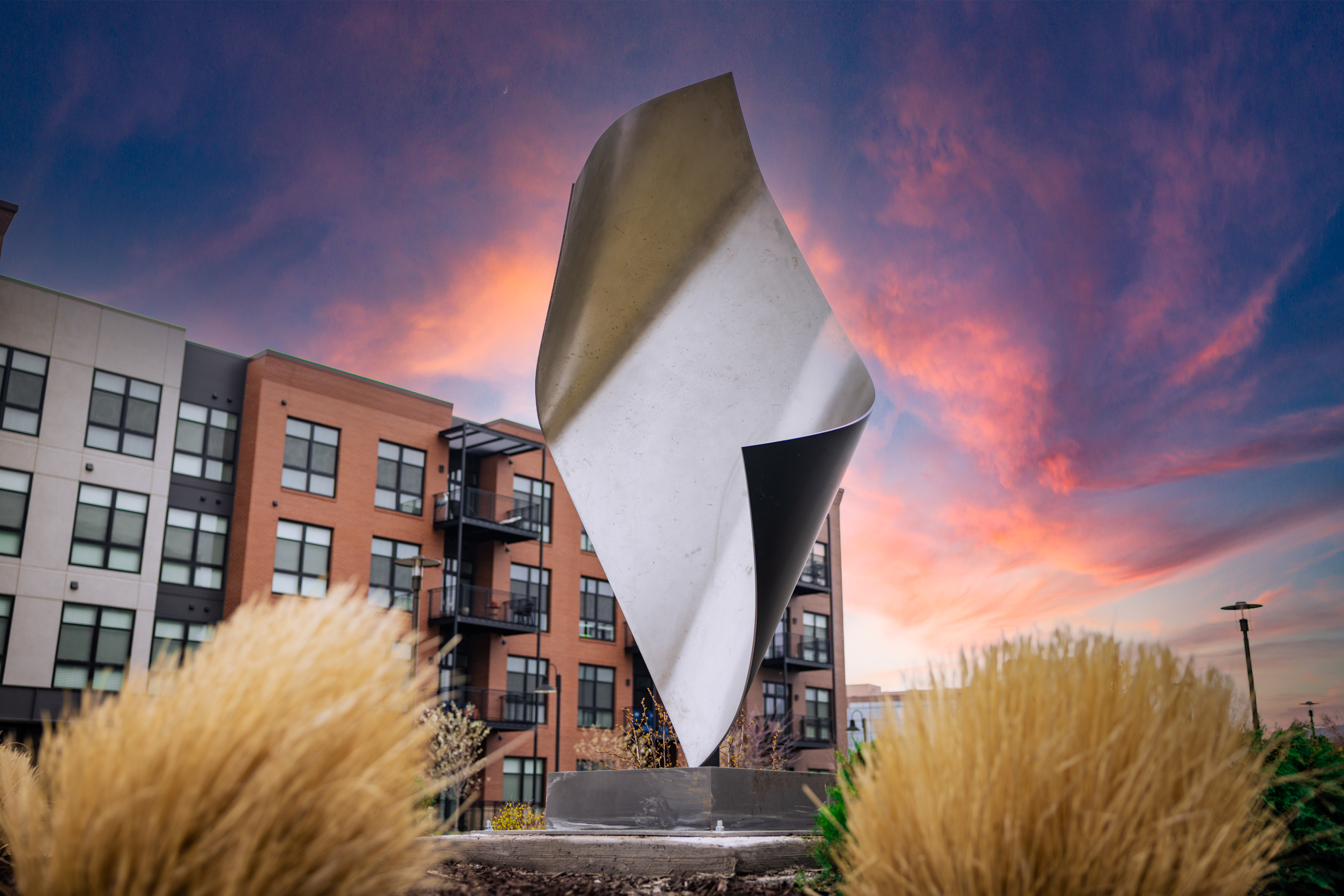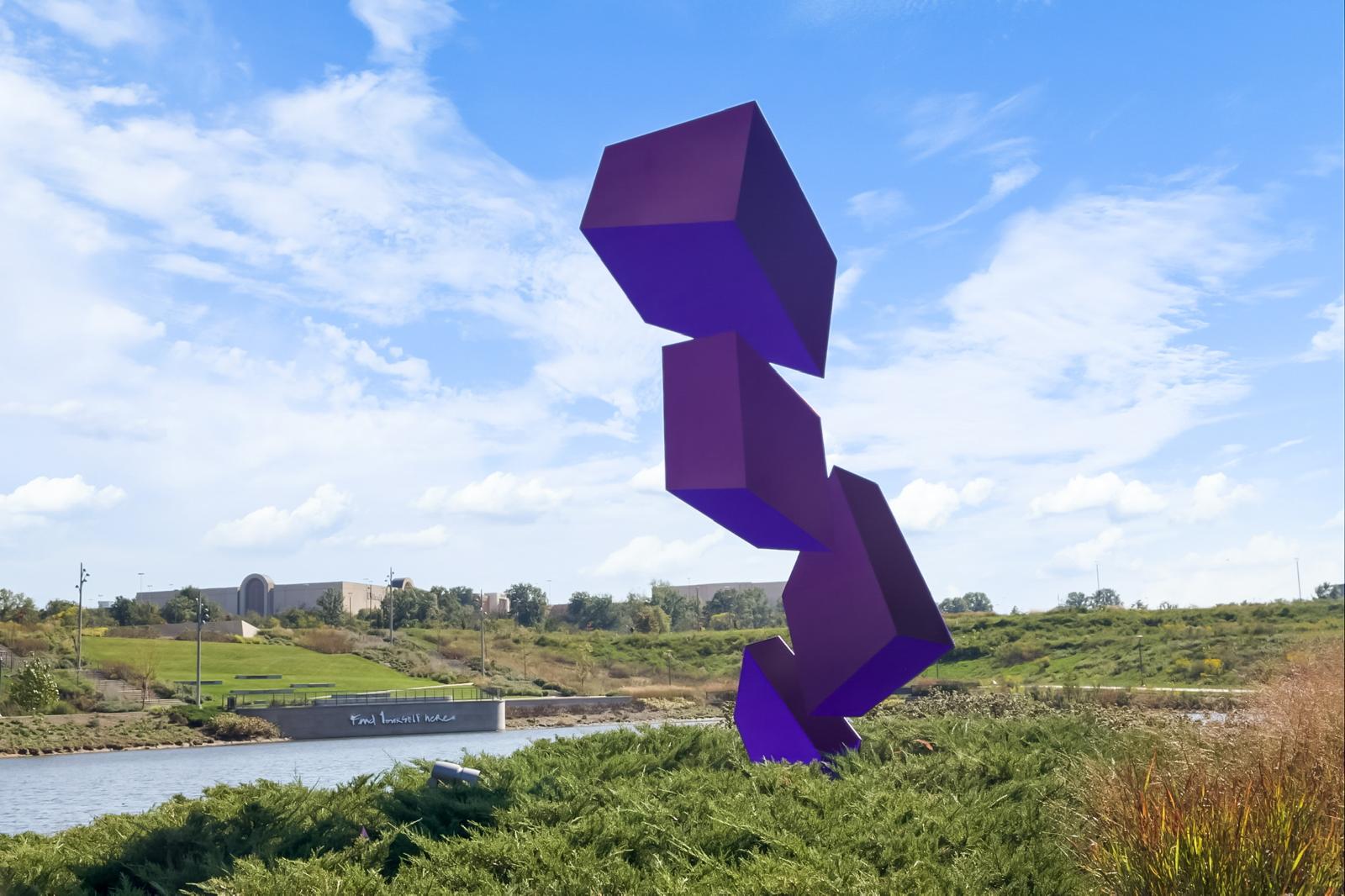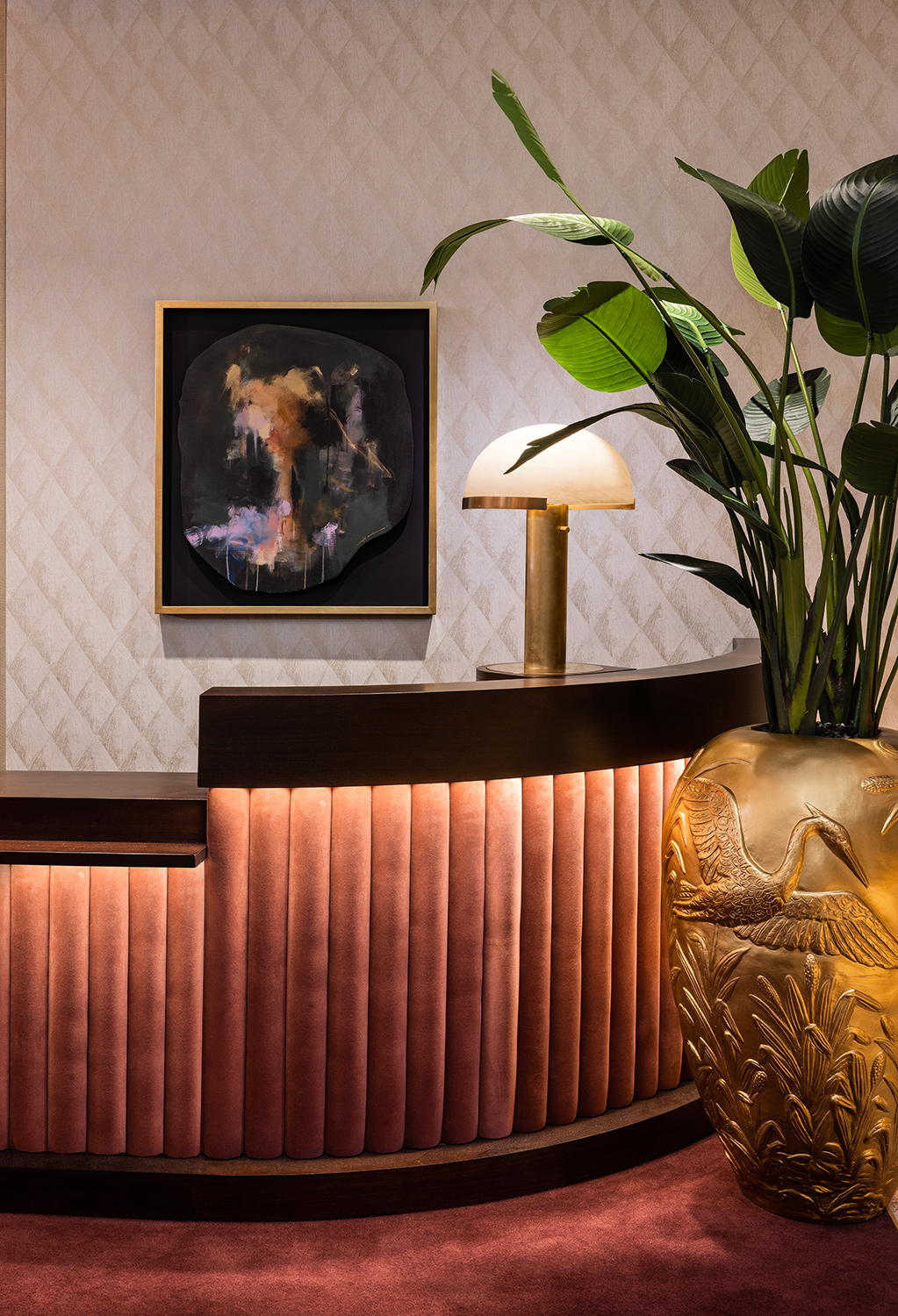5 Questions with Advisor and Curator Alana Greenberg
Oct 29, 2025
In the world of art and design, where creativity meets strategy, art advisor Alana Greenberg really stood out to us. With a wealth of experience guiding private collectors and developers alike, Alana has mastered the art of elevating spaces through meaningful art integration.
We sat down to chat with Alana, as she shone a light on just how vital a role art plays in built environments. She shared how she convinces developers that art transcends mere decoration, embodying long-term value and community connection. From the insights gained through high-end hospitality projects to her thoughts on the evolving role of cultural strategists in the art advisory landscape, Alana is set to challenge traditional perceptions and inspire new approaches.
Join us for an engaging conversation with someone who's redefining the intersection of art and architecture.
1AN: You work with developers and architects at a scale most advisors never touch. What do private collectors often misunderstand about commissioning or integrating art into built environments?
Alana Greenberg: When I’m brought into a project early during the architectural or conceptual phase there’s space to create real alchemy between the art and the environment. We’re not just filling blank walls. We’re using art to shape how a place feels its energy, its rhythm, its atmosphere. That kind of integration can completely shift how people experience a space.
Private collectors may not understand that every piece I commission is made specifically for the project and nothing is off-the-shelf. It’s a conversation between the artist, the architecture, and the story behind the site. And because of that, a deeper relationship forms between the art and the space, but also between the creator of the space and the artist who’s contributing to it.
When that alignment happens, the art doesn’t just sit in the space, it activates it. It becomes part of its memory.
 1AN: That makes perfect sense. Nonetheless, commercial spaces are usually designed for function first, aesthetics second. How do you convince developers that art isn’t decoration, it’s identity and long-term value?
1AN: That makes perfect sense. Nonetheless, commercial spaces are usually designed for function first, aesthetics second. How do you convince developers that art isn’t decoration, it’s identity and long-term value?
Alana Greenberg: In my experience, the most impactful projects happen when art is part of the overall vision. Not added at the end, but considered alongside everything else that brings a space to life. It’s about collaborating with teams that understand how powerful a single piece of art can be when it’s placed with intention and aligned with the architecture.
I’ve had the privilege of working with developers who see art as just as valuable as any other element of their project and not an accessory, but part of the foundation. When the design is strong, you don’t need much. Less is often more. The right piece in the right moment can carry the emotional weight of an entire space. It’s about sensitivity, trust, and knowing when to add and when to hold back.
1AN: I’m sure that is a delicate balance. Potentially one you are dealing with now, as you launch a major public work, The Turtle Garden, on A1A in Fort Lauderdale. What does it take to get a project like this approved, built, and brought to life and why are public artworks becoming power plays for cities and brands?
Alana Greenberg: Getting a public artwork like The Turtle Garden off the ground requires patience, vision and trust. There are design reviews, permitting processes, engineering approvals, and timelines that move at a very different pace than the art world. You’re navigating city systems while also holding space for the creative process, which means staying grounded in both structure and spirit.
I think cities and developers are aware that public art can do something traditional branding can’t. It creates connection. It brings soul to a space. When it’s done with care, a public work becomes part of the city’s identity. Something people remember, return to, and feel a relationship with.
The Turtle Garden is quiet and symbolic. It’s rooted in care for the land, for the ocean, and for the people who pass by. That kind of energy lasts. It becomes part of the landscape in a way no signage ever could.
 1AN: We cannot wait to experience it for ourselves. Clearly you are an invaluable asset in transforming environments into reflections of identity and purpose. For instance, you’ve also curated at the Delano. What have luxury hotels and hospitality groups figured out about art that traditional collectors still haven’t?
1AN: We cannot wait to experience it for ourselves. Clearly you are an invaluable asset in transforming environments into reflections of identity and purpose. For instance, you’ve also curated at the Delano. What have luxury hotels and hospitality groups figured out about art that traditional collectors still haven’t?
Alana Greenberg: Hotels don’t just sell rooms. They sell atmosphere, memory, and feeling. The best hospitality groups understand that art is one of the most powerful ways to shape that experience. It creates mood, anchors identity, and sets the tone before a single word is spoken. It becomes part of the guest’s emotional imprint of the space.
What makes this different from traditional collecting is that it’s less about ownership and more about experience. The work must function in real time with lighting, music, architecture, scent. It’s a layered environment. And when you get the balance right, the art doesn’t just live on the wall. It holds the space.
I think hotels were ahead of the curve in realizing that art has commercial value because of its emotional impact. It turns a property into a destination. Not because someone owns it, but because people feel something when they walk through it.
 1AN: You’re certainly right there… art is instrumental in creating a mood and setting a tone, just as much, if not more so, in a public setting than a private one. While most advisors work one-on-one with private clients, you operate like a cultural strategist, linking artists, developers, architects, cities, and communities. Is this the future of art advisory?
1AN: You’re certainly right there… art is instrumental in creating a mood and setting a tone, just as much, if not more so, in a public setting than a private one. While most advisors work one-on-one with private clients, you operate like a cultural strategist, linking artists, developers, architects, cities, and communities. Is this the future of art advisory?
Alana Greenberg: Every client is different, and every project is its own world. That’s the beauty of this work. No two experiences are the same. Some collectors want a deeply personal, private relationship with art. Others are looking to shape public space, create legacy, or build cultural resonance on a larger scale. I move between those worlds and help translate the vision.
My role has naturally expanded over time, not because I set out to do something different, but because the projects asked for it. One day I might be walking a construction site with an architect, the next I’m in the studio with an artist talking about scale and materials. It’s less about a fixed model and more about listening to the space, to the client, to the intention behind it all.
I’ve been lucky to find my niche in this ever-evolving industry, and I’m grateful that the art I place can be enjoyed by the people whether it’s in a private home or on a public street. That kind of connection is what keeps me inspired.
Connect with Alana here.
Author

Alana Greenberg
Alana is an art advisors based in Miami specializing in working with real estate developers on public art projects.
In her early twenties, Alana founded Kymerah, a New York City-based clothing line where she dressed some of the world’s top celebrities including Rihanna, Sarah Jessica Parker and Taylor Swift . Her garments were sold at global retailers...
Recommended Videos
:sharpen(level=1):output(format=jpeg)/wp-content/uploads/2023/07/ASF23-promo-pics-3222.jpg)
Charlie Manzo, Alaina Simone, Muys Snijders, Kyle McGrath, Caren Petersen, Jason Rulnick, Elysian McNiff Koglmeier, Bianca Cutait, Linda Mariano, Jack Mur
:sharpen(level=1):output(format=png)/wp-content/uploads/2016/06/Steven-Schindler-1.png)
:sharpen(level=1):output(format=png)/wp-content/uploads/2016/06/Katherine-Wilson-Milne-1.png)
:sharpen(level=1):output(format=png)/wp-content/uploads/2016/10/Jacqueline-Towers-Perkins.png)
:sharpen(level=1):output(format=png)/wp-content/uploads/2018/10/Roxanne-Cohen.png)
:sharpen(level=1):output(format=png)/wp-content/uploads/2019/07/Alanna-Butera.png)
:sharpen(level=1):output(format=png)/wp-content/uploads/2016/01/Annelien-Bruins-1.png)
Steven R. Schindler, Katherine Wilson-Milne, Jacqueline Towers-Perkins, Roxanne Cohen, Alanna Butera, Annelien Bruins
:sharpen(level=1):output(format=png)/wp-content/uploads/2016/06/Steven-Schindler-1.png)
:sharpen(level=1):output(format=png)/wp-content/uploads/2016/06/Katherine-Wilson-Milne-1.png)
:sharpen(level=1):output(format=png)/wp-content/uploads/2016/10/Jacqueline-Towers-Perkins.png)
:sharpen(level=1):output(format=png)/wp-content/uploads/2016/01/Annelien-Bruins-1.png)
:sharpen(level=1):output(format=png)/wp-content/uploads/2018/05/Mary-Buschman-1.png)
:sharpen(level=1):output(format=jpeg)/wp-content/uploads/2015/12/Heidi-Lee-Komaromi1.jpg)
:sharpen(level=1):output(format=png)/wp-content/uploads/2017/04/Drew-Watson.png)
Steven R. Schindler, Katherine Wilson-Milne, Jacqueline Towers-Perkins, Annelien Bruins, Mary Buschman, Heidi Lee-Komaromi, Drew Watson

:sharpen(level=0):output(format=jpeg)/wp-content/uploads/2025/10/f66db5a0-a64b-4011-bf4e-a072647cf691-1-e1761870945828.jpg)
:sharpen(level=1):output(format=webp)/wp-content/uploads/2025/11/sebastien-Laboureau-with-art-at-sagamore.jpg.webp)
:sharpen(level=1):output(format=jpeg)/wp-content/uploads/2025/11/Banner-Image.jpg)
:sharpen(level=1):output(format=jpeg)/wp-content/uploads/2025/11/Olga-de-Amaral.jpg)
:sharpen(level=1):output(format=jpeg)/wp-content/uploads/2025/11/F7642843-7A6C-4F72-964E-78BF1B6D4706_1_201_a-scaled.jpg)
:sharpen(level=1):output(format=jpeg)/wp-content/uploads/2025/11/20241206_113913-scaled-e1762280335115.jpg)
:sharpen(level=1):output(format=jpeg)/wp-content/uploads/2025/10/OC1A1144edited1029-scaled-e1761922604727.jpeg)